Fantasian is a JRPG from the creator of Final Fantasy that has been released in two main parts for fans to experience on the Apple Arcade platform. With more post-game content to come, this review will go over the main aspects of Fantasian and whether it lives up to the hype of being an RPG created by the man himself Hironobu Sakaguchi.
- Fantasian Platform Availability
- Fantasian Expectations
- The Game
- Fantasian Story
- Battle System
- Game World Design
- Overall Rating for Fantasian
This review may contain game spoilers.
Fantasian Platform Availability
Platform Exclusivity for games is not a new thing and is sadly a growing trend of the last decade, but it often helps smaller studios bag a big prize before their game is even released and help fund development. Fantasian is developed by Mistwalker, headed by the original Final Fantasy creator Hironobu Sakaguchi. Fantasian is produced by Apple for the Apple Arcade, meaning the game is only available on IOS devices that support the Apple Arcade.
![]()
There is currently no word whether the game will come to other platforms and with Apple being behind the production of the game, it might never happen. Mistwalker have a history with making exclusive games for certain platforms without relenting to other platforms later on.
It feels like a labor of love that combines all the elements that make up a fantastic JRPG, with some modern twists that alleviate some of the old-school issues of these games.
You can check out our buying guide for Best Devices to play Fantasian on. Apple Arcade is a monthly subscription service, and it currently offers you a 30 day free trial for new customers, which is more than enough time to beat the game.
Fantasian Expectations
Fantasian part 1 was released on April 2nd, 2021 after first being showcased in March 2019, with part two coming in August 13th, 2021. With Hironobu Sakaguchi's name being attached to it, and phrases like "going back to his roots" being banded about, Fantasian had a lot of JRPG fans excited.
You can't mention Fantasian without thinking of Final Fantasy, as Hironobu himself has said the game was inspired by a recent playthrough of Final Fantasy VI. The Final Fantasy series has evolved and changed dramatically in the last decade, with the most recent works often steering away from the classic JRPG experience. Not to mention there was a time when you would see a new Final Fantasy game every 18 months... now the wait is closer to every 5 years.
So going into Fantasian there was already some excitement about playing a classic JRPG from the good old days.
The Game
As mentioned, the game is split into two parts (with a third post-game update to follow).
Part 1 and Part 2 are very different in how the game plays; in part one you follow a more linear path and story-driven game, whereas part two opens up the world with lots of exploration and quests to complete.
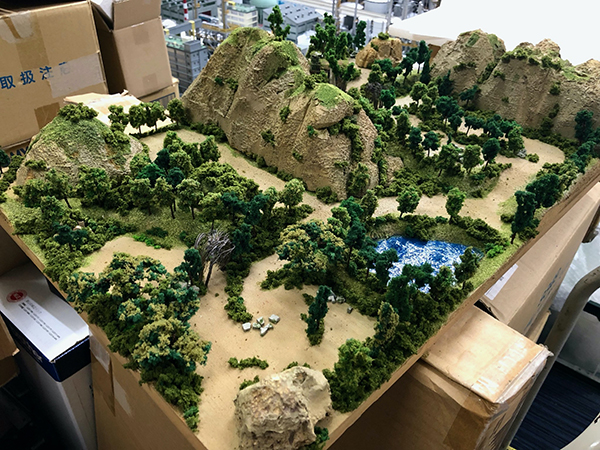
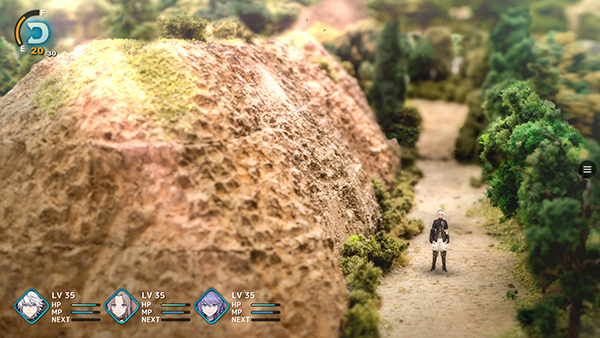
Fantasian isn't a mobile game in the sense of it being a crappy micro-transaction filled RPG. It's a fully-featured JPRG with a great deal of attention made to the world-building, the characters and game systems. The game is built using Diromas, which are real-life 3D models that are then scanned and created in the game engine (Unity).
Â
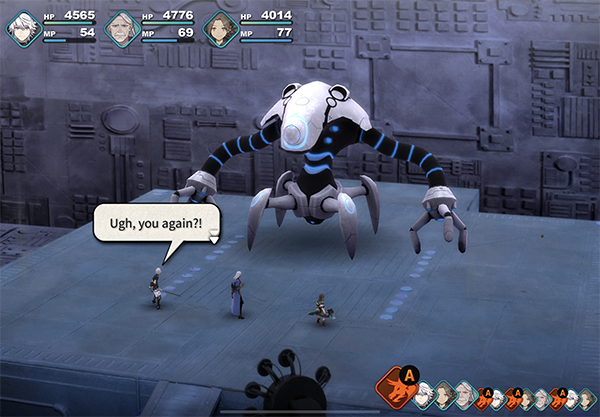
The Battle System is your classic turn-based system with a few modern twists added to it, such as switching in and out characters during battle, the tree-like Growth System that allows you to customize your character's loadout and upgrading weapons.
The music is composed by Nobou Uematsu, who is another Final Fantasy veteran responsible for some of the most iconic songs in the series.
The line coming out of Mistwalker was that this would likely be Hironobu Sakaguchi's last game he makes due to his age. Despite this, there has also been a request for player feedback on whether they would like to see more of Fantasian, which could hint at there being another potential game in the series.
We completed the game with around 60 hours played. The first part is around 20 hours and the second part is a lot longer due to the fact you're given so much freedom to explore and figure things out. Part 2 would probably be a lot shorter if you had a guide to help plan out where you need to go and the tactics to take on the incredibly hard bosses (at least compared to part one).
We played the game on one of the latest iPad models and it ran flawlessly. It has an option in the config menu to run the game at either 30 FPS or 60 FPS, which might help with playing the game on older devices.
Fantasian Story
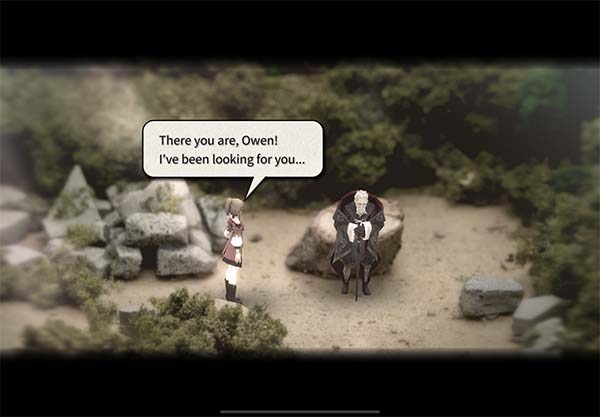
Fantasian Part 1's focus is definitely the story-telling aspect of the game. The first part is more linear, and pushes you through story scenarios without much choice of where to go. It doesn't feel like a corridor simulator though, in fact the world feels like there is plenty to explore and get lost in despite the linearity of the progression. This can sometimes make a game feel stunted but the story is intriguing enough that you just want to learn more about the world and it's characters.
There is a big cast of characters that make the game feel like it has a lot of depth, especially in the first part. Whilst most of the story is played-out in the game, there are also satisfying cut-scenes called Memories that take you away from the main gameplay and to a story-book like feature with fascinating art and dialogue.
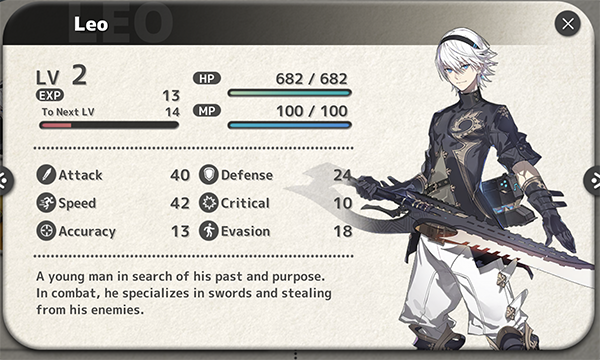
You begin your journey as main protagonist Leo, who has lost his memory and slowly figures out what his purpose is. The story progresses slowly, but in a constructive way so that you can enjoy each new character you meet along the way.
Leo is your typical hero we-can-do-it character; his thoughts and feelings are quite one-dimensional but this isn't a negative- you become more and more connected as you unravel his backstory. There is a charm to the simplicity of his story in the beginning.
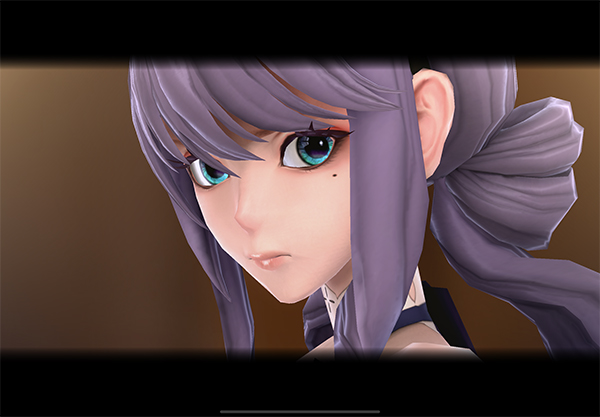
The two female leads, Kina and Cheryl, have definitely made an impact on fans, with their sub-plot being a promising element in the first part of Fantasian. Kina grew up an Orphan in the Frontier Town of En and Cheryl is heir to the throne of the Kingdom of Vibra. Despite being on the same team, fans were already arguing in forums about whether they were Team Kina or Team Cheryl.
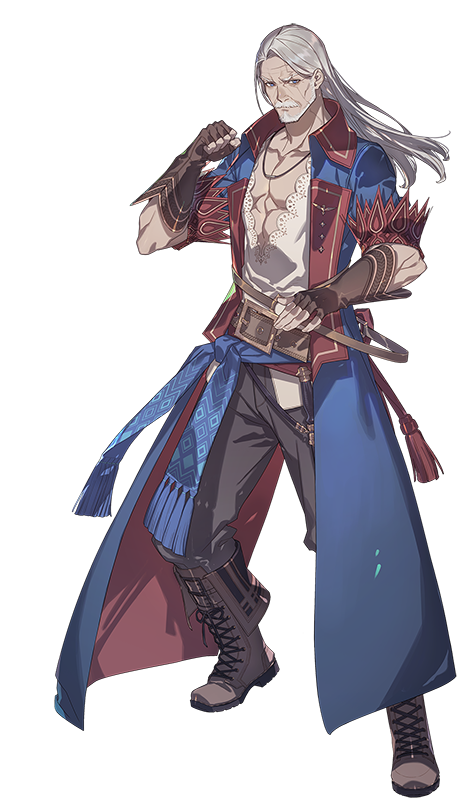
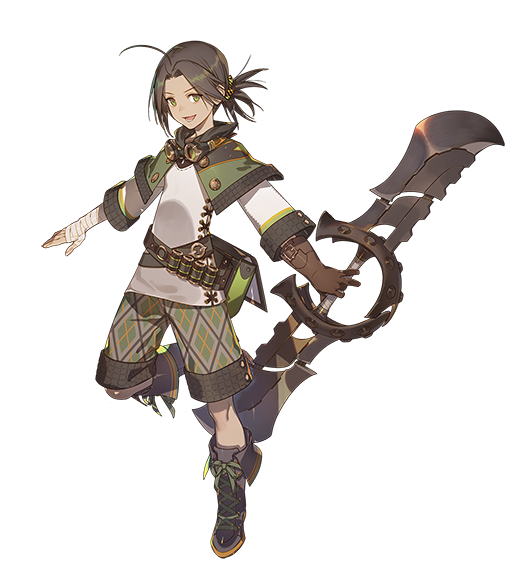
Zinikr's story is actually incredibly important to the plot line, yet the character often feels like a background one to the main three in the first half of the game. Ez, the young boy from the Outskirts of Vibra, is a spunky kid who helps pad out the story.
Late in the game you also meet up with Valrika, who's personality is more robotic than human. And speaking of Robots, you also get two companions in Prickle and Clicker, who are quite charming and offer some comic-relief.
In part two, Tam makes a late appearance to your party. You only see him fleetingly in part one, but he has one of the more meaningful storylines in part two.
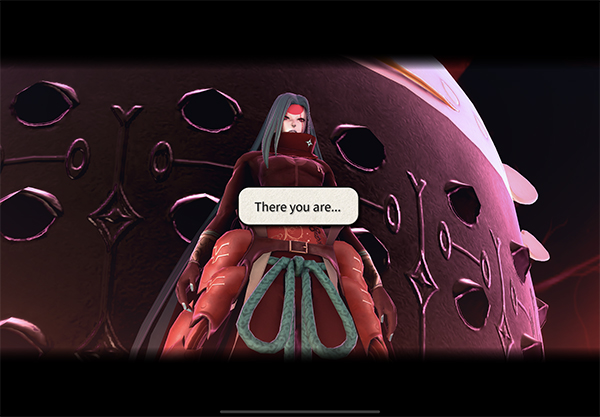
The over-arching story is about the balance of Chaos and Order and the gods who wish to destroy the world. It's a simple plot line, but it gets all kinds of crazy that make it have more substance later on. You definitely care about the characters at the end of part one, which ends in the Chaos Realm. You go into part two with anticipation, knowing the drama was slowly starting to heat up.
Unfortunately, the story really takes a backseat in part two. The focus for part two is the incredibly detailed boss battles, exploration and mini-quests that'll have even the most dedicated RPG fans stumped the first time they try them.
The story in part two largely revolves around the end-game villains and their motivations, whilst you're struggling to clean up the mess. The small tidbits you do get about the main characters often feel flat and bland, especially after you've struggled for an hour on a particular boss to continue the progression of the plot line. Part two feels like it's missing a chunk of story to make us really care about the characters; there is less interaction between Leo, Kina and Cheryl to the point that they almost become background characters this time round.
Instead you'll get a very repeated formulae of finding a new quest, heading to a location that consists of two maps and then a challenging boss battle. You'll then get a couple of minutes of story as a sort of resolution, but it just feels off-key.
The ending does ramp up the tension but it would feel a lot more epic if you had enjoyed more of the characters from part one. By the time you're fighting the final boss, you get more satisfaction from figuring out the boss mechanics than you do with the conclusion of the story.
Battle System
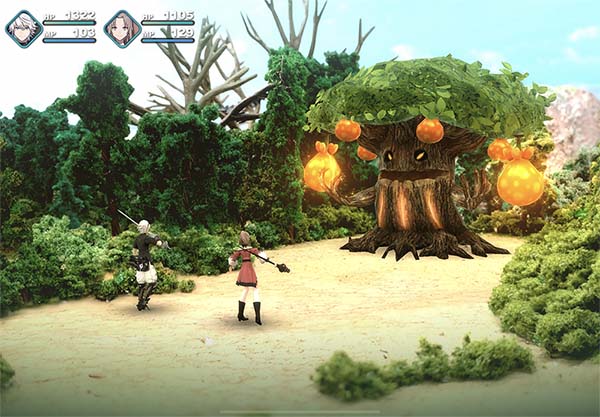
The battle system in Fantasian is one of the best we've played in a long time.
It's a turn-based combat system that combines some new mechanics to add a new dimension to the genre. If you've played an RPG before, many of the skills will feel familiar and a lot of the strategies needed to take down bosses you will have come across before (especially in part one).
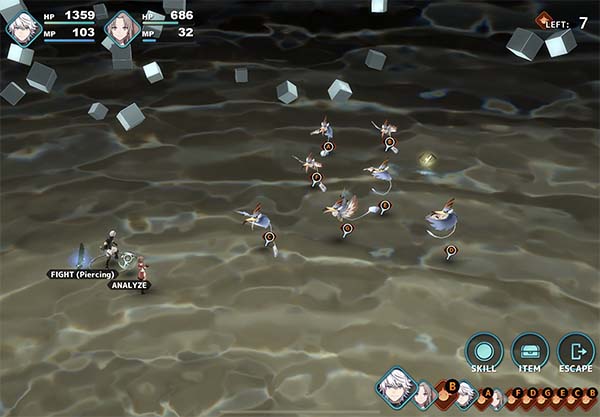
The main talking point of the battle system is in the design of random battles.
Players unlock a device early on called the Dimengeon Device, that stores monsters inside of it. Once the device is full, you're launched into a big battle against all these stored monsters at once, saving you from those random interruptions that can feel very frustrating in older JPRGs.
Since you're taking on 30, 40 and 50 monsters at a time, you gain satisfying power-up boosters that really show off the battle systems drag and aim system.
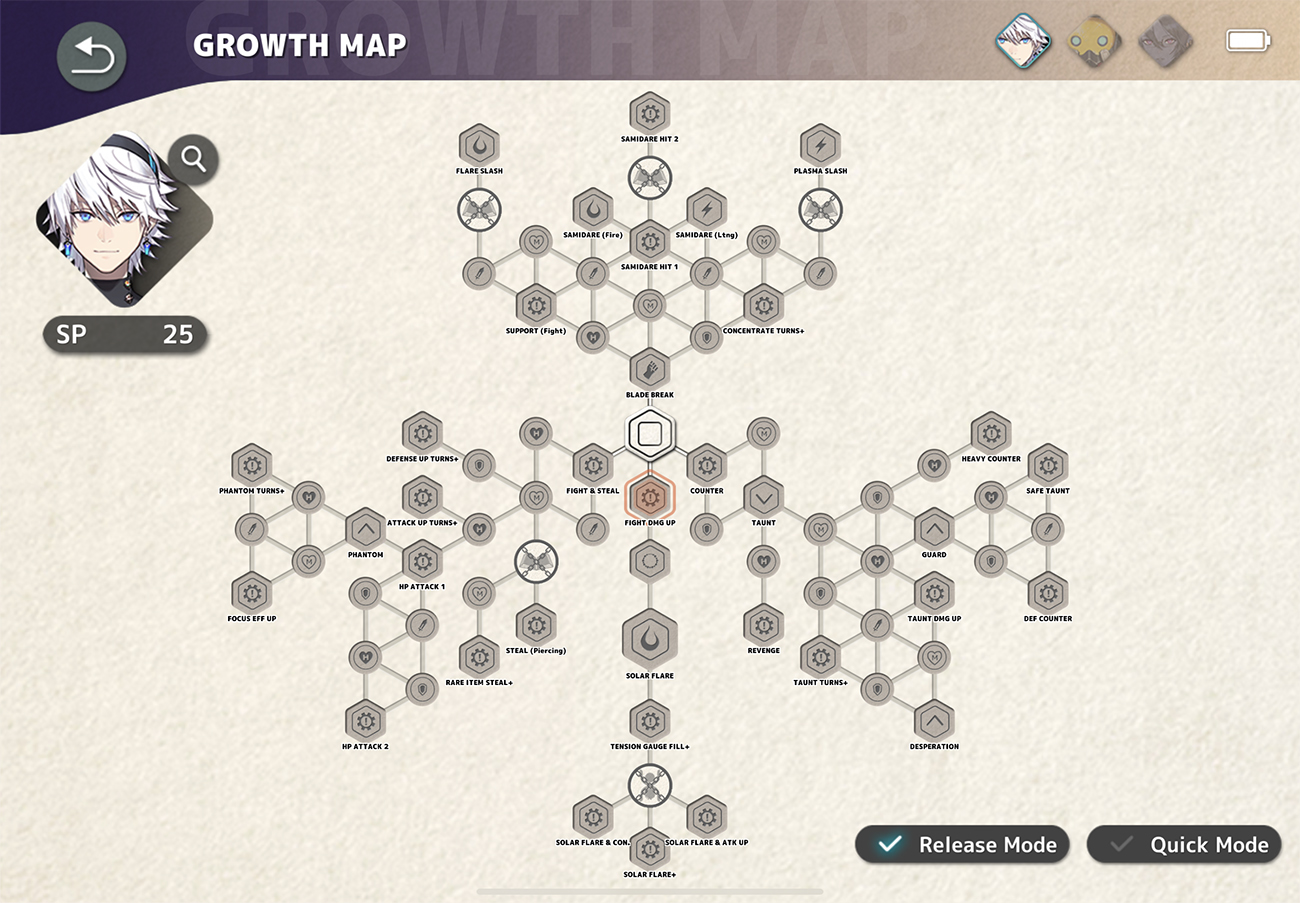
The battle system isn't just contained to the actual arena as there are lots of different upgrade-mechanics outside of battles that you can work on too.
Part one is simple in nature and you mainly focus on acquiring new weapons and leveling up, allowing you to focus more on the story.
In part two, customization opens up with access to the Growth Map that allows you to customize your characters more freely. You can also upgrade your weapons with items you find in the world, allowing you to prioritize your main party members.
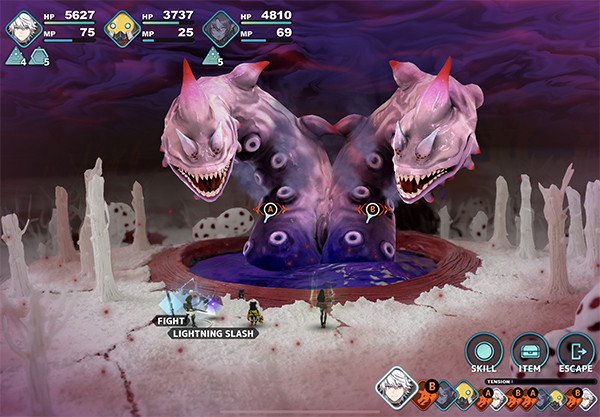
Battle Strategy really plays a key role in the second part of the game. The boss battles are incredibly detailed and there were many we came across that had us stumped for ages.
Part two introduces a mechanic to prevent players from just over-leveling by reducing the amount of EXP you receive from monsters that are below your level. This forces you to figure out the right strategy to take down the boss instead of just powering through.
Players will now have to really think about their equipment before taking on a boss and they will also have to constantly be re-assigning their Growth Map for skills. You'll often have to go into a boss blind, die and then figure out the strategy to take it down before proceeding. There are very few simple bosses in part two of Fantasian that you can just turn up and defeat.
The amount of boss battles in part two will likely turn a lot of people off. You'll either get extreme satisfaction from figuring out how to beat a boss, or incredible frustration at not being able to progress the story because the mechanic's are not obvious to you. A lot of people will feel a bit blind-sided by part two, especially as part one is a lot more forgiving.
Luckily, there are very few penalties for dying against a boss; you can immediately retake on a boss if you die without having to restart the entire story over again and there are plenty of checkpoints that make adjusting your strategy a painless experience.
Game World Design
The game design of the Fantasian World is beautiful.
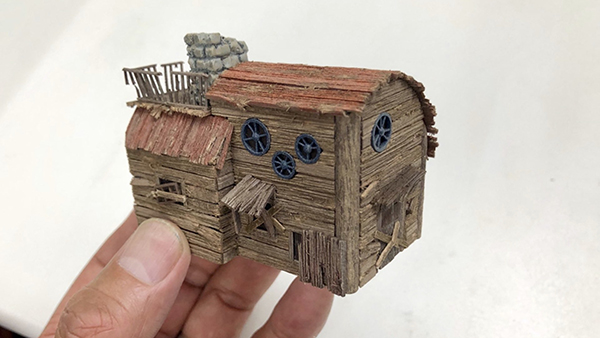
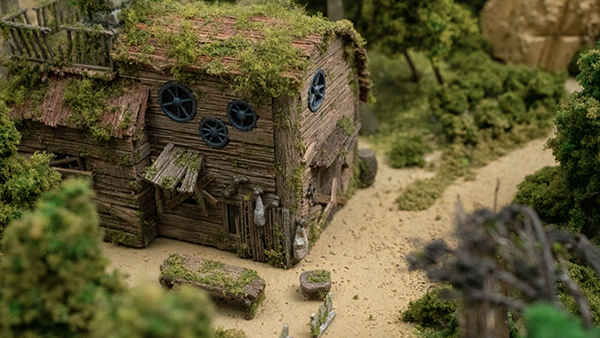
As mentioned, every part of the world was created from real-life models called Diromas. There are over a hundred different maps and places all created using this technique, and you have to marvel at the attention to detail.
You'll be visiting all types of worlds and often find yourself pausing for a moment to take in the new landscapes that the Fantasian Artists and Designers have come up with. The world doesn't feel like any other game because of this.
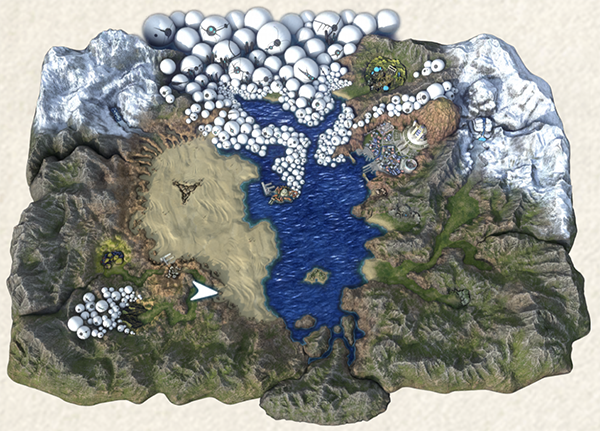
As an RPG, the game world is everything you want. It has vast cities and small villages; creepy dungeons and abandoned forests. The maps are filled with NPCs to talk to, Inns to rest in and Item/Weapon shops to upgrade your gear.
There are hidden treasure chests all over the world, and taking your time to find them all can help you out immensely for boss battles. In part two you get access to the airship and can travel all over the world to find new areas undiscovered from part one.
With the music being composed by Nobou Uematsu, you're not going to feel disappointed by the Fantasian Soundtrack. There are some OSTs that sound straight out of an epic AAA Final Fantasy game that increase the emotion and raise the drama levels throughout the game.
Fantasian is by no-means a small little game with a reused soundtrack, everything feels like a big-budget game. There are 3 discs of the soundtrack available on Apple Music and Spotify, each with around 20 tracks each. Give Resonating Sadness a listen and I challenge you not to feel emotional!
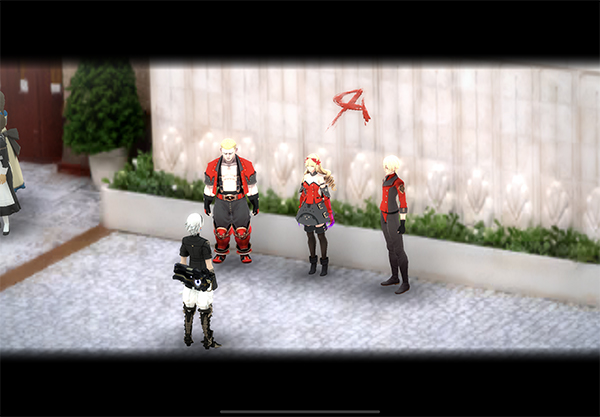
There are also other interesting game mechanics added to the game that help change things up. In part two you'll find yourself with plenty of puzzles to solve, many optional quests to take on and interesting side-characters that often reappear to give you a break from the main storyline.
Overall Rating for Fantasian
There is a lot to love about Fantasian, such as the familiar yet unique battle system and the brilliantly designed Diroma world. Part two adds new locations whilst also allowing you to revisit all of the old areas of the game with new challenges and there are many hours of gameplay that will let you get sucked into the world.
It feels like a labor of love that combines all the elements that make up a fantastic JRPG, with some modern twists that alleviate some of the old-school issues of these games.
Character design, monster design and boss design are all amazing. Part two will really have you marvel at all the unique boss designs to the point where you wonder how many hours must have gone into the technical design to think up these mechanics.
The story is quite simple in part one and turns a bit more complicated in the second part, with a few interesting physic references that try to explain the balance of the world. There is to be a post-game update that comes later; whether this will add anymore to the story remains to be seen.
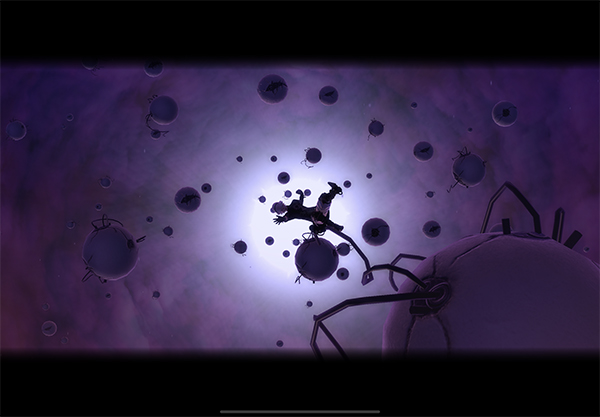
I think the real problem with Fantasian is the fact that the two parts of the game are so very different.Players who enjoyed part one will feel like they are playing a very different game in part two.
Part one is great for it's narrative and seeing the world unfold before you, whereas part two really shines in figuring out boss mechanics and getting satisfaction of overcoming them. But the two don't blend very well together because they sacrifice the other's main feature. An extra part in the middle between part one and part two which expanded on the story more would have helped with the transition to part two.
Overall this a strong entry into the JRPG genre and I'd recommend it to anyone who has access to an IOS device. Hopefully more players will be able to enjoy it if it ever comes to other platforms down the line.
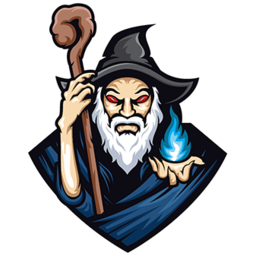
8
Let us know in the comments your thoughts and feelings of Fantasian!
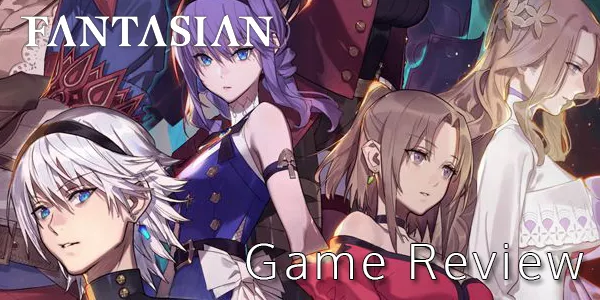
Discussion